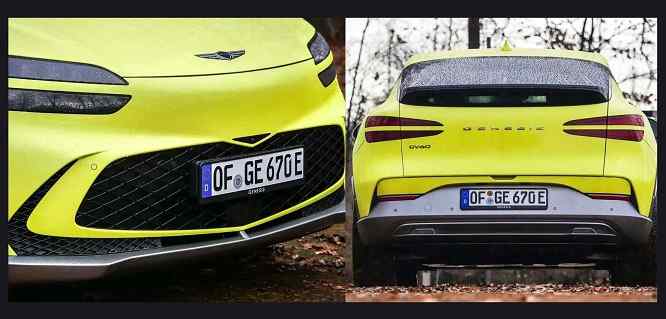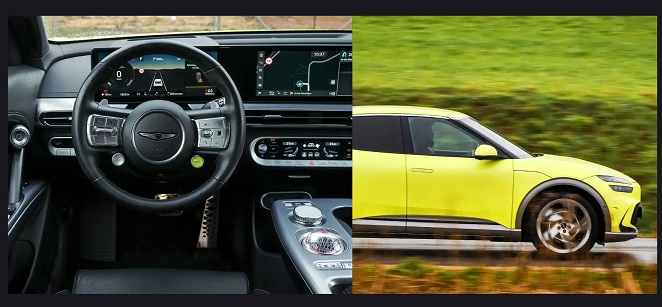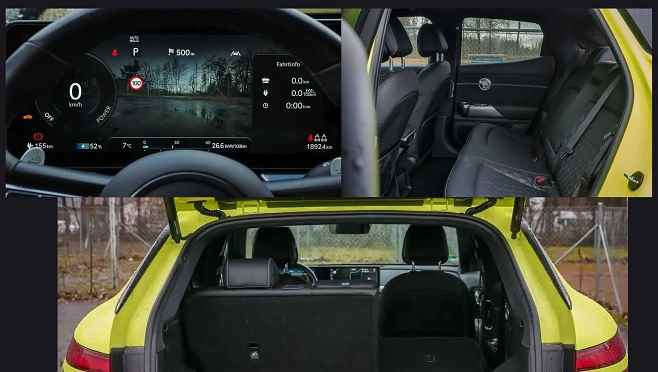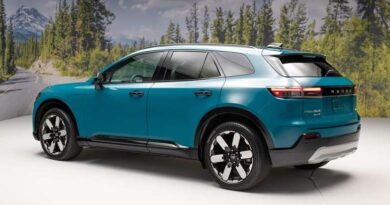2023 genesis gv60 sports plus performance review
2023 genesis gv60 sports plus performance review
Lots of light, but some frowns on handling and range
What is that?
As an electric car aficionado, you will surely know this somewhat crooked yellowing quite well by now: Genesis GV60, the more modern relative of the Hyundai Ioniq 5 and Kia EV6, if you will.
The latter has so far been showered with generous praise, which is primarily because the powerful parent company Hyundai Motor Corporation has managed a real feat with its E-GMP platform.

The Genesis GV60 also benefits from the masterfully thought-out 800-volt base, which currently makes the competition, including those from the German premium camp, look relatively stupid.
How the South Koreans can offer such a tech firework at such a price, you would probably like to know in Ingolstadt, Stuttgart, Wolfsburg, and Co.
Be that as it may: In this country, the luxury group brand saves itself the stuffy entry-level version and goes straight to the full: without two motors, all-wheel drive, and the large 77.4 kWh battery, you can’t get the GV60 from us at all.
You can only choose whether you want to get sick quickly (Sport: 318 hp/605 Nm) or very quickly (Sport Plus: 483 hp/700 Nm).
Incidentally, the surcharge for 86 kW more steam on the front axle is a good $10,890. Sounds pretty mean, but the Sport Plus has adaptive dampers with a road-scanning anticipation function as standard.
And he has some bad tongues would claim: highly useless – delicacies on board that don’t exist in sports.
A boost mode, for example, increases the output of the two machines from 160 to 180 kW each for 10 seconds.
It also has a drift mode, which is essential for a mid-range electric crossover. And if you pay just under 1,400 euros, you can also get digital exterior mirrors here.
You can get leather at no extra cost in sports it’s synthetic. Please decide for yourself, whether this is worth a good 12 to 14 monthly installments.
Thank God Genesis made the decision for me and parked a Sport Plus with all imaginable chicanes (fortunately without the screen exterior mirrors) in the very, very yellow “Sao Paolo Lime” (870 euros) in the editorial garage.
Colleague Lehbrink already drove the best piece at the launch date last May. He was extremely impressed, as you can see from these lines.
However, it was almost summer then, it went for a few hours over fantastic terrain, you didn’t have to worry about ranges, and then you put the electric planer back in front of the event building and left the field exhilarated.
I’ve had the car in my daily routine for two weeks now. In well “winter”. With everything that throws at an electric car in terms of patronage.
Is it still all sunshine and roses?

Yes and no. But first, a few thoughts on positioning the GV60. The fact that Genesis’ first independent e-car is being launched as a 4.50-meter-long crossover (it’s not an SUV with a ground clearance of 160 mm) makes perfect sense from a sales point of view.
Now all other Genesis such as the G80 the G70 Shooting Brake, or the two SUVs GV70 and GV80 are so incredibly beautiful and elegant and the GV60 is somehow not at all.
As if there were an unwritten law that you have to cut the “Generation Z pandering filter” over a new electric car. The quality is right. But the ambiance would do with more brand-typical grandeur.
Of course, you could also buy a GV70, which runs purely electrically. But not on the super good E-GMP platform, but rather crammed into the existing combustion engine construct. That has to be taken into account.
How was it with the GV60?
Well, it was good, but then again not so good. The first little shock happened right after the delivery.
When I first pressed the start button on the right behind the steering wheel, the digital instruments in front of me naturally woke up and showed a remaining range of 235 kilometers. Although the vehicle’s deliverer was kind enough to give me 79 percent of the remaining battery.
That has little in common with the specified 466 kilometers WLTP range. And it can’t have been due to a possible hara-kiri driving style on the part of the messenger, because I drove the car leisurely 90 percent of the time for two weeks, but the power consumption was always around 23 to 27 kWh.
Fuel consumption aside, however, the Everyday Danger worked pretty well. The car lets in very little noise from the outside, and the suspension does a pretty promising job.
Now you will think: Of course, the dampers can also look into the future. But that doesn’t mean anything, because they can do that with the big combustion engine GV80, and they’re hit so hard that you could get scared and anxious, Despite the monstrous 21 inches.
The GV60 isn’t an S-Class, but that would be weird. On the other end of the spectrum, please don’t expect a sports car. Driving dynamics were at best solid home cooking.
The winter tires may have had a hand in that, but the GV60 seemed quite soft and a bit undefined on the front axle. With a clear understeer tendency.
I would have wished him a little more skill in disguising his weight of 2.15 tons, precisely because 480 kilograms of battery are cheap.
A Polestar 2 shoots around the corner in a much more focused way. However, I don’t want to let anything come to the steering – it works precisely, sensitively, and with good weighting.
The GV60 Sport Plus AWD with its considerable output is the expected bank.
Especially in Sport mode, the stomach feels like it’s being shot in the wrong direction with a slingshot every time you kick the metal. And that continues beyond 140, 150 km/h with surprising vehemence.
The yellow bully manages 235 top. Not even a Mercedes-AMG EQS 53 can do that not if you haven’t paid extra for it.
When it comes to recuperation the GV60 also has something for everyone. It takes place via paddles on the steering wheel and in four stages.
Whether you want to let it run or you don’t feel like pressing a brake pedal anymore – both are possible. And everything in between. Very good.
how is inside

As already mentioned: It’s not just on the outside that you don’t necessarily think you’re with Genesis. The only remnant of the in-house style, somewhere between a yacht and a grand hotel, is the elaborately quilted seating.
The same is mounted a tad too high and could offer more support. It sits very neatly in the back.
The space available for legs and heads is remarkable considering the length of 4.52 meters. Of course, the XL wheelbase helps here.
The trunk volume is also okay at 432 to 1,550 liters. However, a Tesla Model Y offers much more here. The 20-liter frunk is more of a joke, but if you cram a bit, you can at least get the charging cable under.
The dashboard, door panels, and floating center console appear much more playful and futuristic than usual.
The silvery decor has little flair, but there is absolutely nothing to complain about in terms of workmanship, ergonomics, and operation of the interior of this Genesis. Many other manufacturers would do well to aim for a similar level.
The control of the infotainment via touch or rotary pushbutton is excellent – please keep it. Just like the separate climate control with real (they still exist!) buttons and switches.
Koreans just had a nice big cup of common sense here. Something that various German manufacturers would do well again.
The first thing everyone looks at, of course, is the funky glowing glass ball in the middle of the center console. While she can’t tell you anything about your future (I’ve tried, and she had no opinion), she slyly flips over as the car starts and releases the gear selector.
Genesis sees this as a small electric car safety feature. So you know for sure the engines are on, and no accidental mishaps happen.
Otherwise, the Sport Plus is stuffed with everything your heart desires. The driving aids work very well.
Above all, the digital rear-view mirrors, which are shown in the instrument display when the indicator lights up are simply helpful without being annoying. The only extras here are a Bang & Olufsen sound system and a large panoramic glass roof.
Verdict: 7/10
The GV60 is a highly unusual Genesis. Almost obsessively youthful, it lacks the beauty, elegance, and ambiance that makes the rest of the model portfolio so desirable.
In addition, during my time with the car, I found the range to be too short. In terms of driving dynamics, the crossover was rather average.
On the plus side, in addition to the excellent driving performance and the crazy loading speed, there are outstanding features in terms of usability, quality, and equipment. Also, the space is decent for a car of this size.
A test car price of almost $86,983 is something to think about. Here it might be worth taking at the weaker, still fast Sport, which costs significantly less and mainly does without very bearable equipment details.
Related Post



